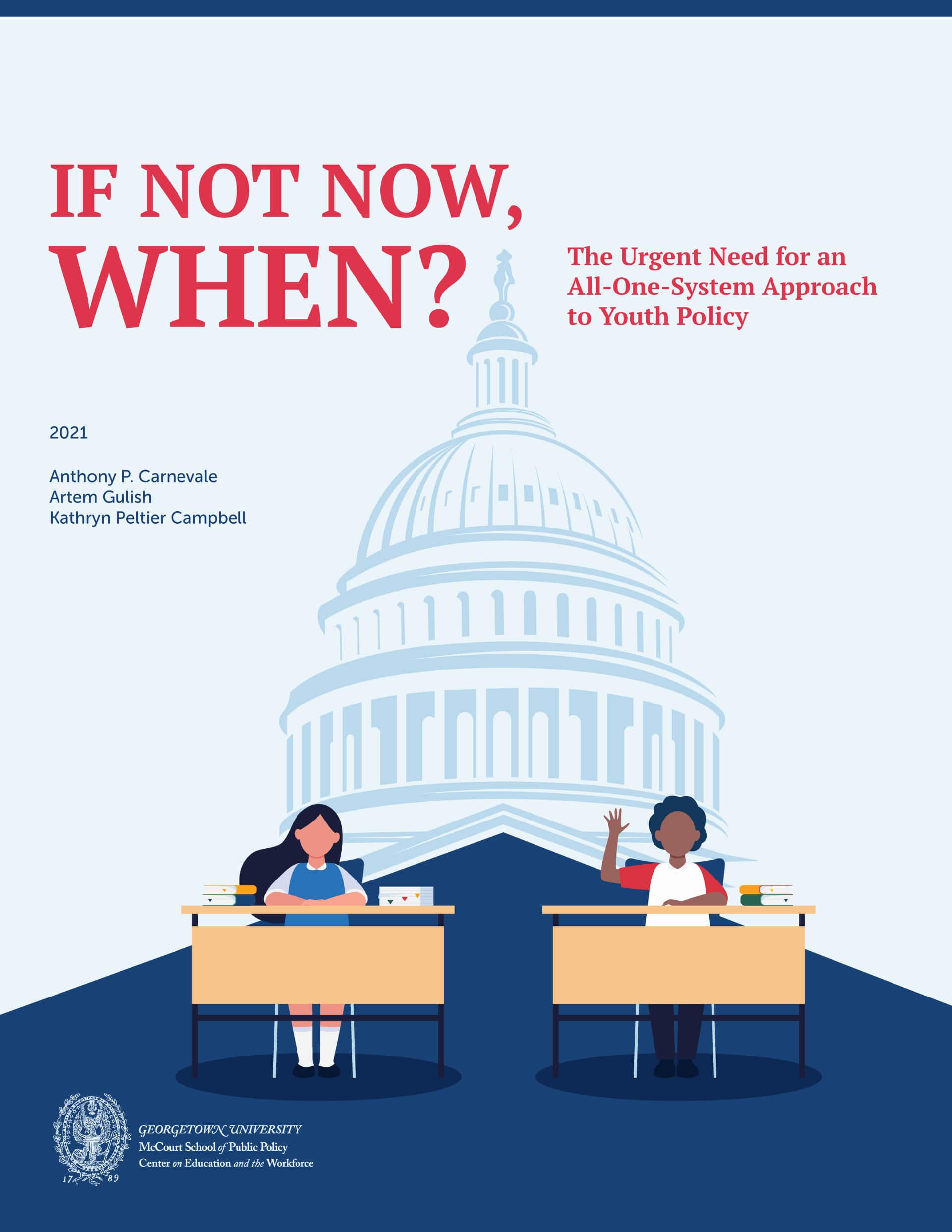If Not Now, When?
The Urgent Need for an All-One-System Approach to Youth Policy
Summary
If Not Now, When? The Urgent Need for an All-One-System Approach to Youth Policy makes the case that the United States’ disjointed approach to youth policy has failed young people. In the current fragmented system, pre-K–12, postsecondary education, and the workforce operate in silos that allow many young people to fall through the cracks. In its place, the country needs an all-one-system approach that supports youth on their journey through education and training and into careers.
Creating an All-One-System Approach Will Require Comprehensive Reform
An all-one-system approach would facilitate smooth transitions on the pathway from youth dependence to adult independence. The Build Back Better Act would begin to reshape the country’s youth policy in ways that align with our recommendations.
1. We need to invest in education and plant the seeds for labor-market success, beginning at birth.
2. We need to imbue inclusive and culturally responsive approaches across our education and workforce systems to improve the experiences of youth from marginalized racial and ethnic backgrounds.
3. From kindergarten through college, we need to recognize and build on the complementarity among classroom learning, occupational exploration, and work-based learning.
4. We need to continue to break down the artificial barriers between secondary schools, postsecondary institutions, and labor markets.
5. We need free college to help low-income students access postsecondary education.
6. We need to create a career counseling system that provides the information and mentorship that students need to plan and pursue their educational and career goals.
7. We need transparency, accountability, and coordination in evaluating, regulating, and administering postsecondary education and workforce training programs.
8. To the extent possible, we need to involve employers in developing and providing work-based education.
Pressures on Young People Have Been Building for a Generation
The majority of young people used to attain good jobs by their mid-20s. Today, there is a new phase on the path to adulthood that combines postsecondary education, training, and early work experience. It now takes many young people until their 30s to latch onto a good job and career.
Seven factors affecting education and the economy have combined to put pressure on young people as they transition to economic independence:
- Extended transition to adulthood
- Structural economic change
- Postsecondary costs
- Collapse of the youth labor market
- Disconnect between K–12 and work
- Lack of investment in young people
- Racial and class inequality

Resources
If Not Now, When? The Urgent Need for an All-One-System Approach to Youth Policy makes the case that the United States’ disjointed approach to youth policy has failed young people.


